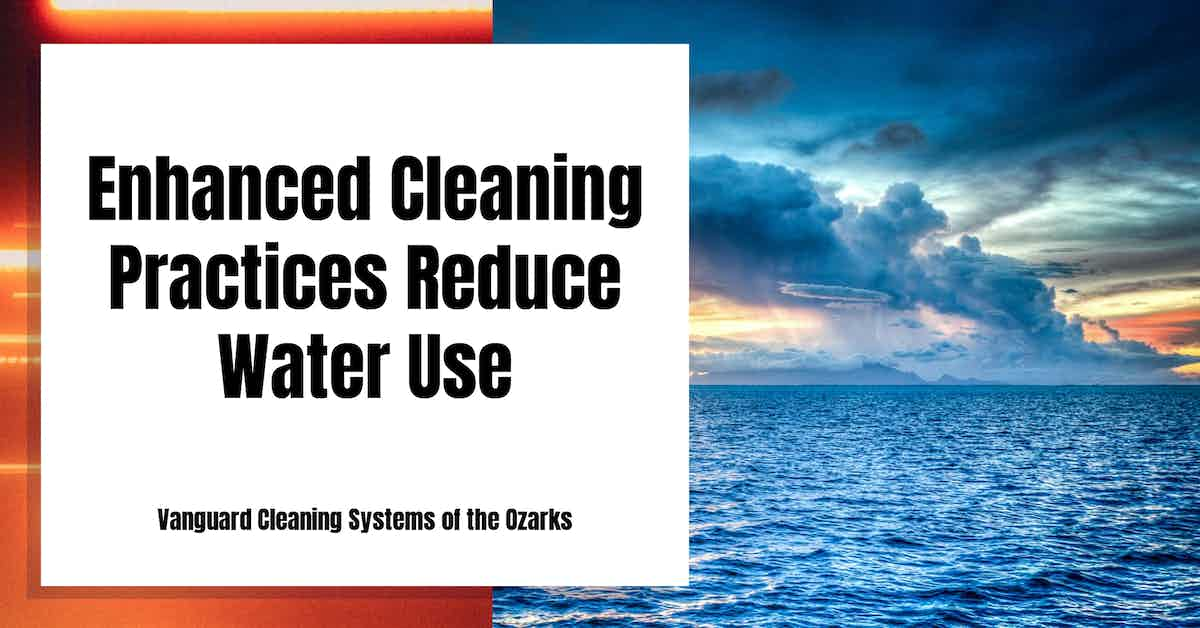Enhanced cleaning practices can be critical in reducing water use in drought-restricted areas and should be promoted and encouraged by governments, communities, and businesses.

Enhanced Cleaning Practices Can Reduce Water Use in Drought-restricted Areas
Water scarcity is a critical global issue that is becoming increasingly relevant as populations grow and the effects of climate change become more pronounced.
Drought conditions, in particular, pose significant challenges for communities that rely on limited water resources.
In many drought-prone areas, the use of water for cleaning purposes is a significant drain on the local water supply.
As a result, it is essential to explore ways to reduce water use in cleaning practices, especially in areas affected by drought.
Background
Water scarcity is a growing problem, particularly in arid and semi-arid regions where water resources are limited.
The World Health Organization (WHO) estimates that over 2 billion people globally lack access to safe drinking water, and the situation is projected to worsen in the coming years.
Billions of people around the world will be unable to access safely managed household drinking water, sanitation and hygiene services in 2030 unless the rate of progress quadruples.
In 2020, around 1 in 4 people lacked safely managed drinking water in their homes and nearly half the world’s population lacked safely managed sanitation.
COVID-19 has highlighted the urgent need to ensure everyone can access good hand hygiene.
At the onset of the pandemic, 3 in 10 people worldwide could not wash their hands with soap and water within their homes.
Water is a precious resource in such regions, and its use must be optimized to ensure its sustainability.
Reducing water use in cleaning practices is of great importance in this context.
The Impact of Conventional Cleaning on Water Conservation
Conventional cleaning practices are a significant source of water consumption, accounting for a substantial portion of water use in commercial facilities.
According to the U.S. Environmental Protection Agency;
The commercial and institutional sector is the second largest consumer of publicly supplied water in the U.S., accounting for 17 percent of the withdrawals from public water supplies.
This sector includes a variety of facility types such as hotels, restaurants, office buildings, schools, hospitals, laboratories, and government and military institutions.
Approximately nine percent of the total water use in commercial and institutional facilities in the U.S. takes place in office buildings.
The three largest uses of water in office buildings are domestic/restrooms [including cleaning], heating and cooling, and landscaping.
In drought-prone areas, this consumption can significantly strain the local water supply.
In such areas, reducing water use in cleaning practices can significantly affect the sustainability of the local water supply.
The Role of Enhanced Cleaning Practices in Reducing Water Use
Enhanced cleaning practices can play a critical role in reducing water use in drought-restricted areas.
These practices typically involve more efficient cleaning methods, products, and equipment.
For example, water-saving technologies such as low-flow showerheads and faucets can reduce water use in cleaning practices.
Additionally, the use of microfiber cleaning cloths, which require less water than traditional cleaning methods, can also play a significant role in reducing water use.
Another aspect of enhanced cleaning is using more environmentally friendly cleaning products.
These products are formulated to use less water, are more efficient at removing dirt and grime, and often contain fewer harmful chemicals.
For example, products that use enzymes to break down dirt and grime require less water and are less harmful to the environment than traditional cleaning products.
References & Resources
- Ongoing Nationwide Droughts Spotlight Value of Water Efficiency in Facilities
- Reducing Commercial/Industrial Janitorial Water Use
- WaterSense at Work
- Saving Water in Office Buildings
Takeaway
Water scarcity is a critical global issue that poses significant challenges for communities in drought-prone areas.
The use of water for cleaning purposes is a significant drain on the local water supply, and it is essential to explore ways to reduce water use in facility maintenance.
Studies have found that water use for custodial purposes can exceed 70% of total consumption and cost more than $10K per month.
Enhanced cleaning practices involve using more efficient cleaning methods, products, and equipment, which can significantly reduce water use in drought-restricted areas.
By implementing these practices, communities can conserve water and improve the sustainability of their local water supply.
Vanguard Cleaning Systems of the Ozarks' franchise-owned custodial service provider business cleans more than 8M sq. ft. each week, maintaining an industry topping 95+% of its customer base, year-over-year, and boasting more than 60 5-star Google reviews.
Need more capability from your vendor partners? --Let's talk.
In Oklahoma, dial 918-960-4450
In Arkansas, dial 479-717-2410
In Missouri, dial 417-812-9777

